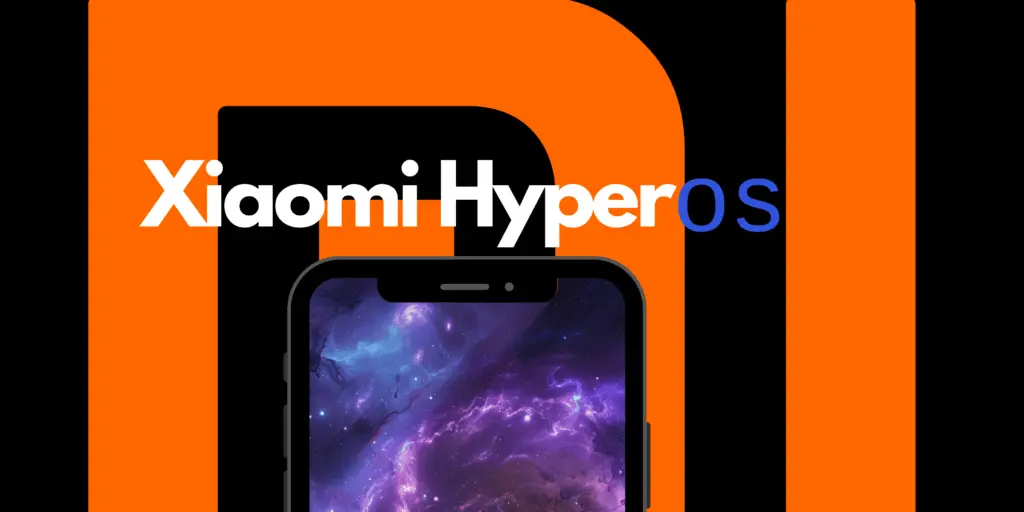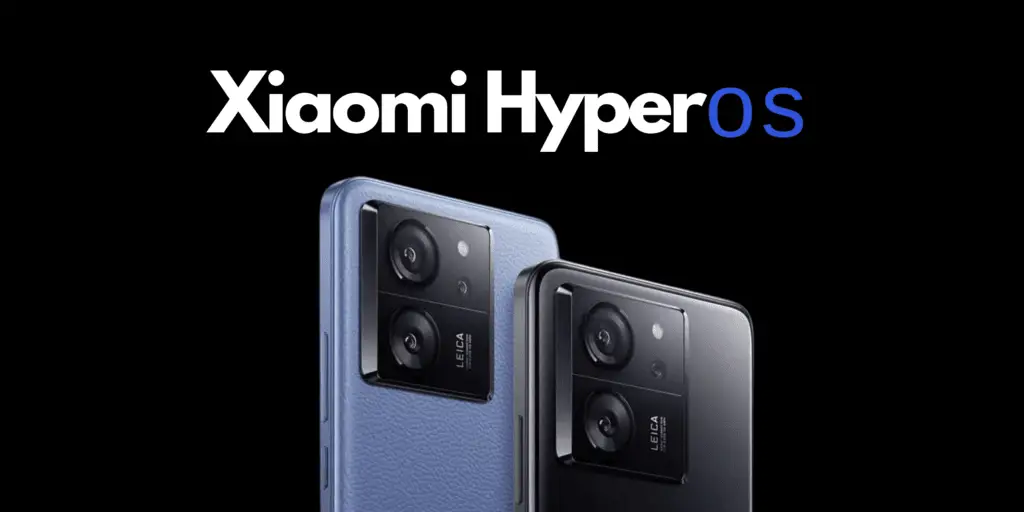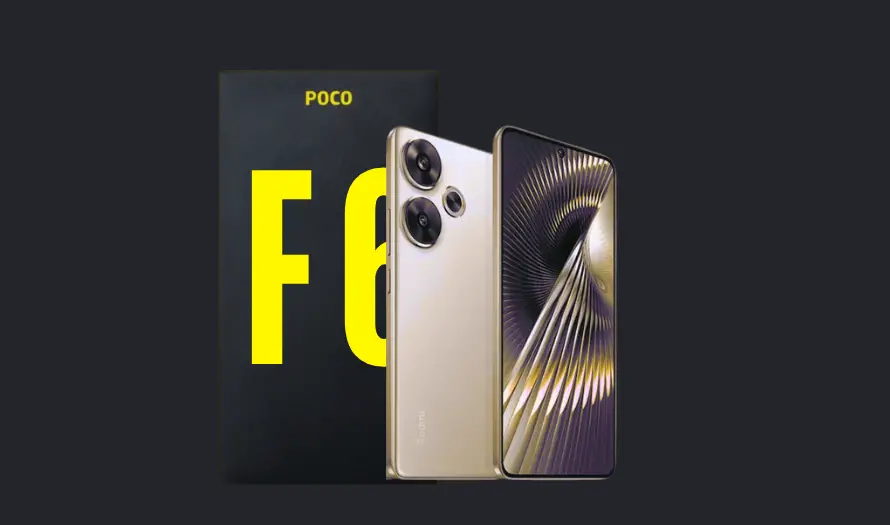HyperOS is Xiaomi’s ambitious vision for creating a unified ‘Human x Car x Home’ smart ecosystem, aiming to integrate and interconnect personal devices, cars, and smart home products seamlessly. Launched during the Xiaomi 14 event at MWC Barcelona.
HyperOS is not a single operating system but rather a collective term that encompasses Xiaomi’s various operating systems designed for its extensive range of products. This includes smartphones, smart home devices, and potentially, cars in the near future.
At its core, HyperOS leverages different foundational technologies for different types of devices: for IoT products, it uses the open-source Xiaomi Vela platform, which is based on RTOS/NuttX, while for smartphones and tablets, it is built on AOSP.
HyperOS is designed to bring coherence to the diverse IoT landscape by ensuring that all devices within the Xiaomi ecosystem can communicate and work together intelligently, offering users a seamless and integrated experience across their devices.
One of the key components of HyperOS is the Hyper Connect framework, which facilitates this inter-device connectivity, allowing for a range of functionalities like seamless device control, file sharing, and synchronized device operations, among others.
Xiaomi also incorporates generative AI features into HyperOS, enhancing user interaction with devices through AI-powered services such as AI Subtitles, AI Portrait, and AI Expansion, further enriching the user experience within the ecosystem.
HyperOS represents Xiaomi’s effort to not just keep up with but also lead in the evolving smart technology landscape, focusing on interconnectivity, efficiency, and user-centric innovations.
It signifies a step towards a future where technology ecosystems are not only interconnected but are also intelligent enough to adapt to and anticipate user needs, making the smart home, smart mobility, and personal device experience more intuitive and integrated.
The Technology Behind HyperOS
HyperOS is underpinned by Linux and Xiaomi’s self-developed Xiaomi Vela system. This dual foundation ensures exceptional compatibility and system resource management across a wide range of devices. The Vela system, particularly, is tailored for IoT devices and is based on the open-source NuttX real-time operating system, offering a lightweight, modular, and scalable solution for smart devices.
HyperOS has undergone comprehensive refactoring to optimize performance for individual devices. This includes enhancements to the file system, memory management, and network systems, ensuring that each device within the ecosystem can deliver its best performance while maintaining a consistent user experience and facilitating seamless connectivity.
The underlying layer of HyperOS supports over 200 processor platforms and more than 20 standard file systems, accommodating hundreds of device types and thousands of SKUs. This flexibility allows for tailored configurations, operations, and deployments based on specific hardware requirements, ensuring optimal performance across devices with varying hardware capabilities.
At the heart of HyperOS’s cross-device connectivity is the HyperConnect framework. This innovative technology enables real-time networking between a myriad of devices, from smartphones and tablets to smart home products and potentially cars in the future.
It allows users to control and manage their devices seamlessly, enhancing the convenience and efficiency of the Xiaomi ecosystem.
HyperOS integrates advanced generative AI features to enhance user interaction and experience across devices. This includes AI Subtitles for real-time translation and summarization, AI Portrait for generating images based on existing photos, and AI Expansion for extending photos beyond their original bounds.
These features are powered by Xiaomi HyperMind, the central nexus of HyperOS, which utilizes large foundation models to bring intelligent services to users.
Xiaomi places a high emphasis on security within HyperOS, employing techniques such as end-to-end encryption and a self-developed Trusted Execution Environment to ensure robust cross-device and system-wide privacy and security.This comprehensive security approach protects sensitive information and maintains user trust in the interconnected ecosystem.
In line with its vision to foster a vibrant ecosystem, Xiaomi has made parts of HyperOS, like the Xiaomi Vela platform, open source. This encourages collaboration with global developers and partners, facilitating innovation, improving performance, and enabling real-time connectivity capabilities across a wide spectrum of devices.
Through these technological innovations and a focus on user-centric design, HyperOS aims to redefine the smart device experience, providing a cohesive, intelligent, and secure ecosystem that seamlessly integrates personal devices, cars, and smart home products.

Key Features of HyperOS
HyperOS aims to create a cohesive ecosystem where all Xiaomi devices, from smartphones and tablets to smart home devices and electric vehicles, can communicate and interact seamlessly. This integration is aimed at providing a fluid user experience where devices can intelligently cooperate and provide unified services.
One of the significant advancements with HyperOS is the optimization of system storage. It reduces the firmware size on smartphones, making the system lighter and freeing up space for users. This optimization also contributes to faster device performance and enhanced efficiency.
HyperOS introduces improved scheduling capabilities that accurately manage hardware resources and tasks, ensuring optimal performance and power efficiency across devices. This feature is particularly beneficial for running resource-intensive applications, providing stable frame rates and lower power consumption.
With the HyperConnect framework, HyperOS facilitates real-time networking and seamless control over a wide array of devices. Users can effortlessly monitor and manage their devices, streamlining operations and enhancing the interconnected experience within the Xiaomi ecosystem.
HyperOS includes generative AI features like AI Subtitles, which can generate video subtitles, meeting summaries, and real-time voice translations, improving accessibility and convenience for users across different languages and contexts.
This feature allows users to generate images of people from a database of existing photos, offering creative and personalized visual content. Users can expand photos beyond their original bounds using on-device computation, enhancing the utility and creativity of image editing.
Hyper Mind, the AI centre of HyperOS, enables devices to understand user needs proactively and adapt accordingly. It utilizes perceptual capabilities to learn user preferences and automate device responses, making the ecosystem more intuitive and user-friendly.
HyperOS emphasizes robust security with end-to-end encryption for data transmission between devices and a self-developed Trusted Execution Environment to protect sensitive information. This ensures a secure and trustworthy user experience across the ecosystem.
Xiaomi has adopted an open platform approach with HyperOS, encouraging collaboration with global developers. This initiative aims to foster innovation, improve device performance, and enhance real-time connectivity capabilities, contributing to the growth and dynamism of the ecosystem.
HyperOS vs. MIUI
HyperOS and MIUI were both developed by Xiaomi, serving as operating systems that cater to different aspects of the user experience and device ecosystem. While MIUI has been Xiaomi’s flagship software layer for its smartphones and tablets.
HyperOS represents a broader ambition, aiming to integrate a wider range of devices into a cohesive ecosystem. Here’s a comparative look at HyperOS and MIUI to highlight their differences and unique features.
Developed as a custom skin based on Android, MIUI is primarily focused on smartphones and tablets, offering a range of customization options, user-friendly features, and a unique interface that differentiates Xiaomi devices from other Android-based devices.
While also built on the Android Open-Source Project for smartphones and tablets, HyperOS extends its reach beyond mobile devices to encompass smart home products, IoT devices, and potentially cars. It integrates various operating systems under the Xiaomi ecosystem to ensure seamless connectivity and interaction across devices.
The core objective of MIUI is to enhance the Android user experience with additional features, optimizations, and a distinctive aesthetic. It focuses on providing a rich user interface, extensive theme options, and performance enhancements specific to mobile devices.
HyperOS aims to create a unified ‘Human x Car x Home’ smart ecosystem, placing emphasis on cross-device connectivity, intelligent interactions, and ecosystem-wide coherence. Its goal is to enable devices to communicate intelligently and make smart decisions using artificial intelligence, thereby offering a more integrated and automated user experience.
MIUI offers features like an extensive theme store, improved privacy controls, and Mi Share for fast file transfers. It also includes Mi AI, a voice assistant tailored for mobile device tasks.
Introduces generative AI features like AI Subtitles, AI Portrait, and AI Expansion to enhance user interaction with devices across the ecosystem. HyperOS also features the Hyper Connect framework for seamless device integration and Hyper Mind for proactive intelligence, enabling devices to anticipate and adapt to user needs intelligently.
MIUI is characterized by its distinctive design language, with customizable icons, a comprehensive theme store, and a suite of Mi apps designed to enhance the Xiaomi device experience.
While retaining some visual and functional similarities to MIUI, HyperOS introduces new UI elements, animations, and optimizations aimed at creating a cohesive experience across a wider range of devices. It focuses on fluidity and integration, aiming for a seamless interaction between smartphones, smart home devices, and more. Offers robust security features, including an app lock, hidden folders, and regular security updates to protect user data.
Emphasizes end-to-end security across the ecosystem, employing advanced encryption and a self-developed Trusted Execution Environment to ensure privacy and security not just on individual devices but across the interconnected network of Xiaomi products.

The Future Vision of HyperOS
Xiaomi envisions HyperOS as the cornerstone of a fully integrated ecosystem where every device, regardless of its function, is interconnected. This goes beyond traditional device pairings, aiming for a scenario where your car, home appliances, and personal gadgets communicate and operate in harmony, offering a seamless experience that adjusts to your lifestyle and needs.
With the integration of advanced AI capabilities, HyperOS is designed to not just respond to commands but to anticipate needs and offer personalized experiences.
By analysing user behaviour and preferences, HyperOS aims to predict and automate tasks, making everyday interactions with technology more intuitive and less intrusive. This could range from adjusting your home’s lighting and temperature based on your habits to suggesting the fastest route for your daily commute.
A key aspect of HyperOS’ s future vision is achieving flawless cross-device continuity, allowing users to switch between devices without losing context or functionality. This means starting a task on one device and finishing it on another—be it sending emails, watching videos, or controlling smart home devices—without any hiccups in the experience.
As the ecosystem expands, so does the challenge of maintaining security and privacy. HyperOS aims to implement robust, end-to-end encryption and security measures across all devices. By doing so, Xiaomi intends to protect user data and ensure privacy, building trust within its ecosystem.
Advanced security protocols and regular updates are envisioned to safeguard against threats, ensuring a secure environment for users to connect their lives digitally.
Xiaomi’s vision for HyperOS includes fostering an open and collaborative ecosystem that encourages innovation and growth. By opening up its platform to developers and partners, Xiaomi aims to enrich the ecosystem with a diverse range of apps, services, and functionalities, driving forward the integration of technology into every aspect of daily life.
Ultimately, HyperOS represents Xiaomi’s commitment to driving the future of smart living. It’s not just about creating smart devices but about crafting a smart environment where technology proactively supports and enhances the human experience.
As this vision comes to fruition, HyperOS could redefine our interaction with technology, making our living spaces more responsive, our commutes more efficient, and our daily routines more attuned to our personal needs and preferences.
Challenges and Opportunities
Ensuring that a wide range of devices with different operating systems, hardware capabilities, and software requirements work together seamlessly is a monumental task. Achieving interoperability across such a diverse ecosystem requires standardizing communication protocols and interfaces.
Xiaomi can lead or participate in industry consortia to develop open standards for IoT devices, fostering broader ecosystem compatibility.
With an increased number of interconnected devices, the potential for privacy breaches and security vulnerabilities escalates. Ensuring end-to-end security and user data privacy in such an expansive ecosystem is challenging.
Investing in advanced encryption technologies and robust security frameworks can not only mitigate these risks but also strengthen consumer trust in Xiaomi’s ecosystem.
Convincing users to invest in and adopt an ecosystem that potentially locks them into using exclusively Xiaomi products can be difficult. Users may be hesitant to commit to a single brand for all their smart technology needs.
Xiaomi can emphasize the openness and interoperability of HyperOS with non-Xiaomi products, reducing fears of an ecosystem lock-in and encouraging wider adoption.
By successfully implementing HyperOS, Xiaomi positions itself as a leader in the IoT and smart home markets, capitalizing on the growing demand for interconnected smart devices.
This leadership can provide Xiaomi with a strategic advantage in shaping the future of smart living, influencing standards and user expectations.
The wealth of data generated from a wide range of devices within the HyperOS ecosystem can be leveraged to offer highly personalized and proactive services to users, enhancing their daily lives.This data can also fuel innovation in AI and machine learning, leading to the development of new features and services that anticipate user needs.
The integrated ecosystem approach opens up opportunities for Xiaomi to venture into new product categories and services, such as smart transportation, energy management, and healthcare. Collaborating with other companies in these sectors could lead to the creation of innovative solutions that further enrich the HyperOS ecosystem.
By fostering an open platform and encouraging third-party development, Xiaomi can significantly expand the capabilities and appeal of the HyperOS ecosystem.Engaging with a community of developers and users for feedback and ideas can accelerate innovation, leading to a more dynamic and versatile ecosystem.

Final Thoughts
The journey towards realizing Xiaomi’s HyperOS—a visionary ‘Human x Car x Home’ smart ecosystem—embodies the intricate dance between ambition and pragmatism in the realm of technological innovation. As Xiaomi endeavours to weave together the disparate threads of smartphones, smart homes, vehicles, and more into a cohesive and intelligent fabric, the challenges it faces are as significant as the opportunities that lie ahead.
HyperOS represents more than just a technological advancement; it is a bold statement on the future of interconnected living, where devices are not isolated silos but part of a greater, harmonious system attuned to human needs and preferences.
The challenges of achieving interoperability, ensuring privacy and security, and fostering user adoption speak to the broader difficulties inherent in pioneering such comprehensive integration. Yet, these hurdles also serve as catalysts for innovation, pushing Xiaomi and the wider tech industry towards developing more robust, user-centric solutions.
The opportunities that HyperOS presents—establishing market leadership in IoT and smart home sectors, leveraging data-driven insights for personalized experiences, exploring new markets and services, and engaging with a vibrant developer community—highlight the potential for transformative change. This ecosystem has the power to redefine user interaction with technology, making our daily lives more connected, efficient, and responsive to our needs.


